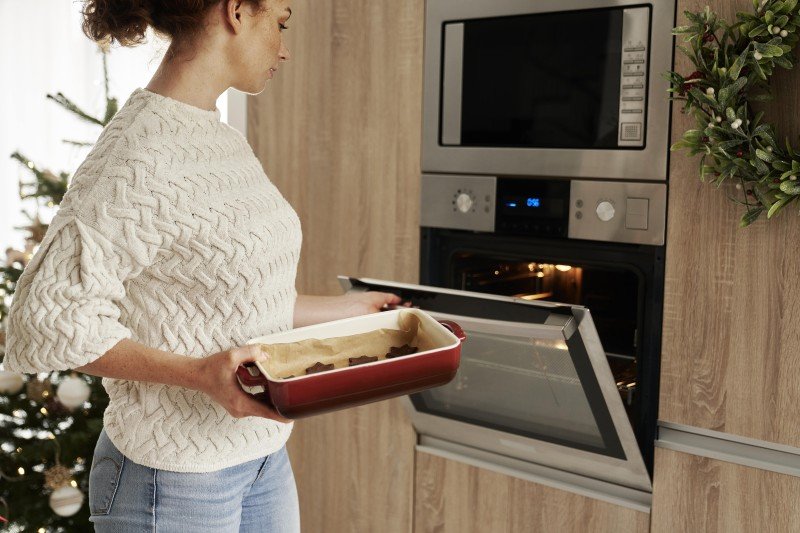The Most Sour Advice We've Ever Seen About Hobs And Ovens Hobs And Ovens
Understanding Hobs and Ovens: A Comprehensive Guide for Cooking Enthusiasts
The kitchen is frequently related to as the heart of the home, where culinary productions come to life. Two essential parts of any kitchen are the hob and the oven. While they are both important for cooking and cooking, numerous property owners might not totally understand the distinctions, performances, and numerous types readily available in the market today. In this post, we will check out these appliances in detail, assisting you make notified choices for your cooking requirements.
Table of Contents
- What is a Hob?
- 1.1 Types of Hobs
- 1.2 Benefits of Different Hob Types
- What is an Oven?
- 2.1 Types of Ovens
- 2.2 Benefits of Different Oven Types
- Choosing the Right Hob and Oven for Your Kitchen
- Regularly Asked Questions (FAQs)
- Conclusion
What is a Hob?
A hob, typically referred to as a cooktop, is a cooking surface area that you put cookware on to prepare food. It includes a series of heating aspects and is often installed on counter tops. In contemporary cooking areas, hobs come in numerous designs, innovations, and performances.
1.1 Types of Hobs
There are numerous kinds of hobs available in the market:
Type
Description
Gas Hob
Utilizes gas burners for cooking, providing exact temperature control.
Electric Hob
Operates using electrical heating elements, commonly seen in strong or glowing kinds.
Induction Hob
Utilizes magnetic fields to heat pots and pans straight, promoting energy effectiveness.
Ceramic Hob
Features a smooth glass top, making use of electric coils below the surface area.
Strong Plate Hob
Conventional electric hobs with exposed metal plates that warm up.
1.2 Benefits of Different Hob Types
Gas Hobs:
- Quick cooling and heating.
- Visual flame control for exact cooking.
Electric Hobs:
- Even heating; ideal for simmering and boiling.
- Easy to clean up, specifically flat surfaces.
Induction Hobs:
- Energy-efficient as just the pot warms up.
- Security functions, such as automated shut-off.
Ceramic Hobs:
- Attractive aesthetic appeals with a smooth finish.
- Even surface areas for simple cleansing.
Strong Plate Hobs:
- Cost-effective and durable.
- Good for basic cooking needs.
What is an Oven?
An oven is a kitchen appliance utilized for baking, roasting, and broiling food. Ovens can be standalone units or built into kitchen cabinets, offering numerous cooking approaches that can boost or transform ingredients.
2.1 Types of Ovens
Similar to hobs, there are numerous kinds of ovens, each with its advantages:
Type
Description
Traditional Oven
Runs with heating components, ideal for baking.
Convection Oven
Utilizes fans to circulate hot air, cooking food uniformly and rapidly.
Microwave
Cooks food using electro-magnetic radiation; perfect for reheating.
Steam Oven
Makes use of steam to cook food, protecting wetness and nutrients.
Wall Oven
Built into the wall, offering benefit and aesthetic appeal.
2.2 Benefits of Different Oven Types
Standard Ovens:
- Simple to utilize without any complicated settings.
- Versatile for different cooking techniques.
Convection Ovens:
- Faster cooking times due to air circulation.
- Boosted browning and crisping for baked products.
Microwave Ovens:
- Quick cooking or reheating of food.
- Energy-efficient for low-volume cooking.
Steam Ovens:
- Health-conscious cooking that keeps nutrients.
- Excellent for baking bread and cooking veggies.
Wall Ovens:
- Convenient positioning; saves area.
- Less flexing needed to gain access to cooking meals.
Choosing the Right Hob and Oven for Your Kitchen
When choosing a hob and oven, elements such as space, cooking design, and individual choices need to be thought about. Here's a simple guide to help you select:
Factors to Consider
- Cooking Needs: Evaluate your cooking routines. Do you frequently bake, or is stovetop cooking more common?
- Area Availability: Measure your readily available kitchen space. Some hobs or ovens might need more space than others.
- Fuel Type: Decide between gas and electric, based on availability and individual choices.
- Budget: Determine what you're willing to invest and discover options within that variety.
Quick Tips
- Prioritize Efficiency: Look for energy-efficient models to reduce long-term costs.
- Check out Reviews: Explore user evaluations to collect viewpoints on efficiency and dependability.
- Seek advice from Professionals: Seek advice from kitchen design specialists when planning your design.
Regularly Asked Questions (FAQs)
1. What is the distinction in between a hob and an oven?
A hob is a cooking surface area generally for stovetop cooking, while an oven is an enclosed area used for baking, roasting, and broiling food.
2. Can I use any pot on an induction hob?
No, induction hobs require magnetic pots and pans. Stainless steel and cast iron pots work, however non-magnetic materials like aluminum will not.
3. How do convection ovens vary from traditional ovens?
Convection ovens employ fans to circulate hot air for even cooking, whereas conventional ovens do not have this feature.
4. Is it possible to have both a hob and oven as a single system?
Yes, there are variety cookers that integrate a hob and an oven within one appliance, using a detailed cooking service.
5. How do I clean my hob and oven?
Most hobs and ovens have suggested cleaning techniques depending upon their products. It is recommended to seek advice from the manufacturer's instructions for the best practices.
Understanding the distinctions in between hobs and ovens is crucial for anybody aiming to optimize their kitchen area or improve their cooking skills. By understanding Online Cooker Sales , their benefits, and how to select the ideal ones for your requirements, cooking can become a more satisfying and efficient experience. Whether you are an experienced chef or a novice cook, the best mix of hob and oven can elevate your culinary developments to brand-new heights.
